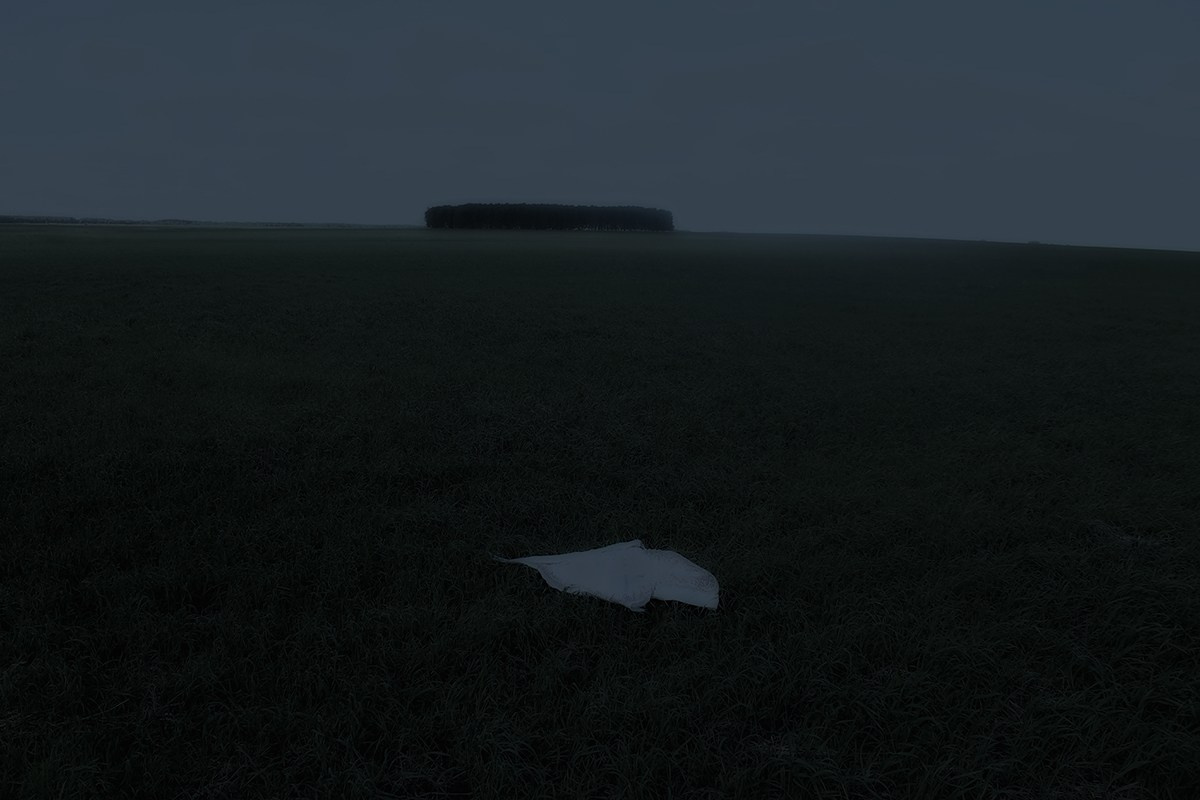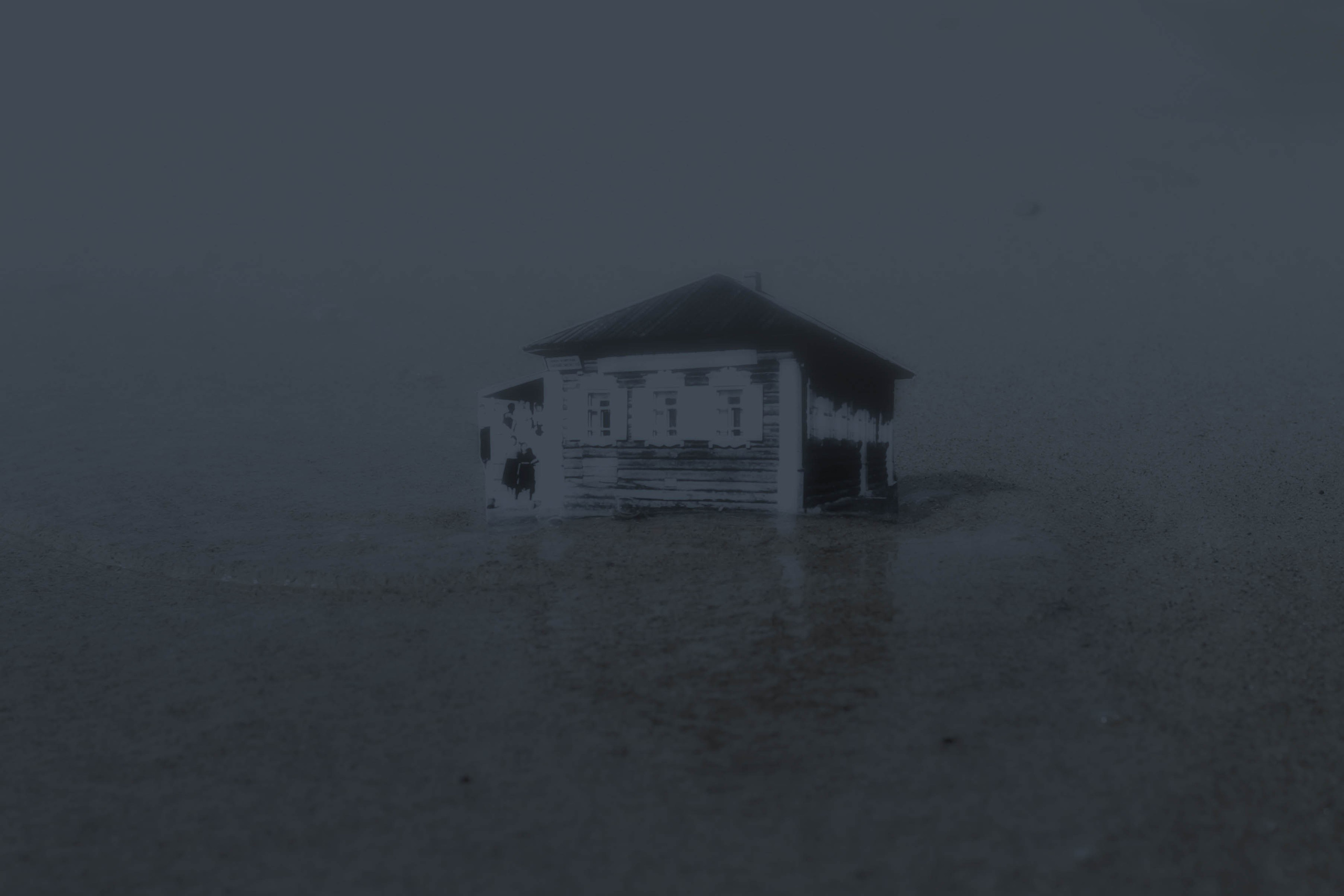The Path of Waves
“Great Construction Project of Communism” is the name of the most ambitious construction projects of the Soviet Union. Hydroelectric stations were such projects. In the second half of the 20th century USSR began to implement large-scale hydropower projects in Siberia which found new ways for economic growth. There was the other side: thousands of people were forced to relocate from the flooded areas, thousands of settlements were destroyed and flooded. Hydroelectric stations created new biomes and changed the appearance of habituated places. “The Path of Waves” is a reflection of the consequences of building hydroelectric power stations. I investigate the problem of the loss of migrant’s birthplace and their everyday way of life. The circumstances of that kind of migration are often traumaitic, it doesn’t regard the reasons why a person has changed his place. People lost forever their homeland after flooding. Analyzing their memories, interviews, I noticed a common theme: whatever the hydroelectric power plant is, whatever the time, people leave their cultural identity together with their small motherland, which becomes history, to be preserved, remembered, but no longer possible to live through. Migrants often meet together to remember the dead and their homeland.
Slivers
The material objects and images I create are each in their own way intended to confront the viewer with the experience of loss. I create artifacts whose purpose is to « inject” the viewer (punctum, mnemic traces). Loss is conceptualized using “slivers”. I use slivers of the forests flooded during the construction of the hydroelectric power station. I glued photos. Slivers are physical traces of flooding, evidence of the destruction.
Embroideries
I have used scenes from personal photographic archives of migrants to create embroideries. It is these moments that evoke nostalgia for the past, referring back to a happy time before the flood. These scenes are universal and can be found in every family album. Let the embroidery depersonalize the depicted people, but involves familiar and close to everyone images.
Cyanotype print of a wave

Another object is a cyanotype print of a wave. The photograph of the wave is embroidered with the image of a hydroelectric power plant. The photograph was taken on the coast of the Novosibirsk hydroelectric power plant reservoir, at the bottom of which lies the town of Berdsk and a few dozen villages. The image of the hydropower plant is a collective one. The trace of the wave is ghostly, but eventually it becomes material and fixed. Hydropower station is an object holding back the colossal force of water. Cyanotype allows us to physically capture the trace of this force.
Video
Exhibition
The exhibition “Practice of Place” (curator — Alexander Nikolsky) in CC19 (Novosibirsk) in 2021.
DOCA-2024
International Festival of Contemporary Art. Moscow. Russia. Photographs by DOCA.



Youth Centre for Contemporary Art. Ulyanovsk
Exhibition by Julia Altukhova at the Youth Centre for Contemporary Art. Ulyanovsk. Russia. 2025

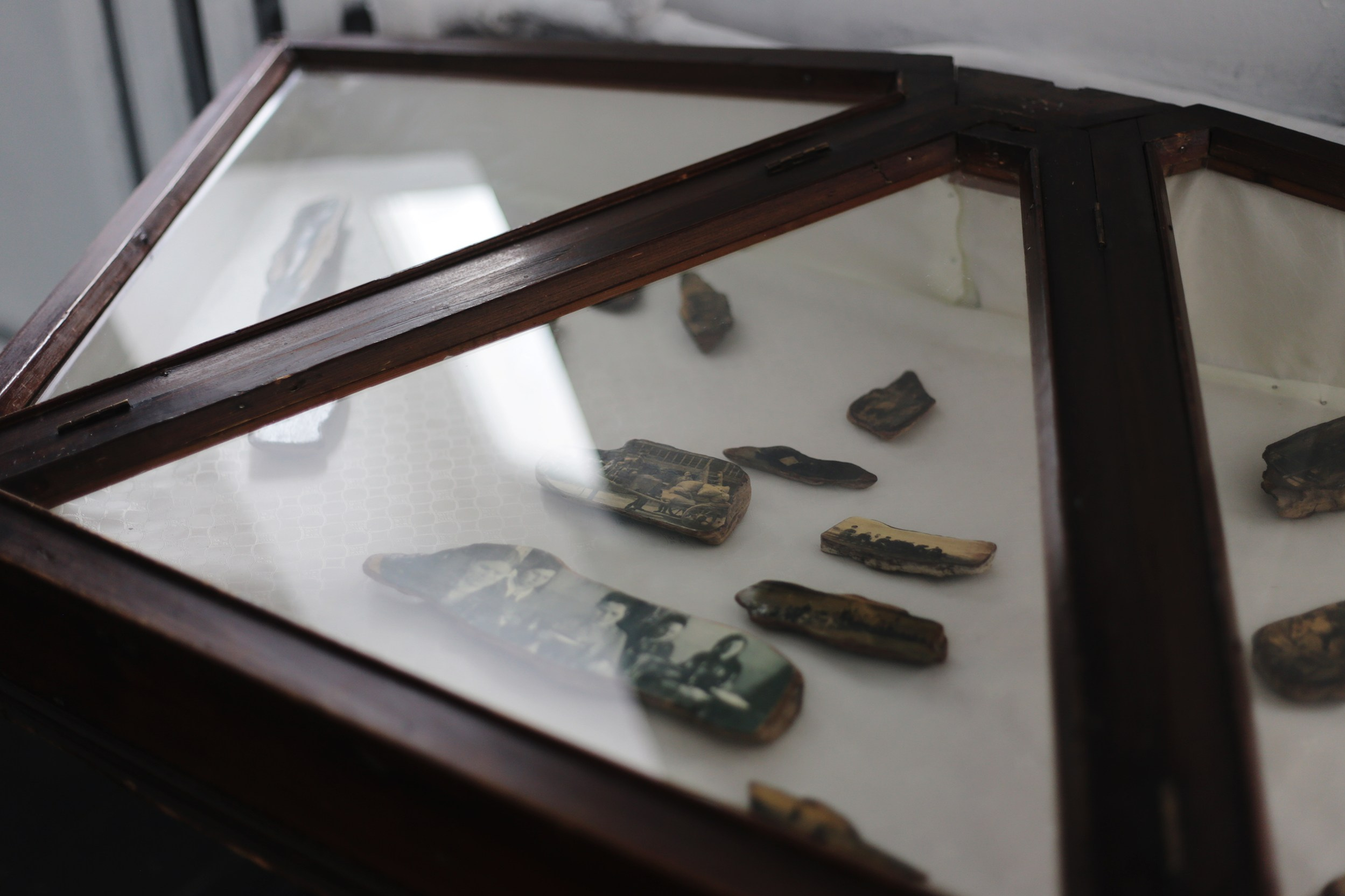

Ulyanovsk is located near the Kuibyshev Reservoir. Many settlements were flooded, and thousands of people were relocated to other areas.

“The Nature of Nature”
Group exhibition “The Nature of Nature” at the Shabolovka Gallery (Moscow). Curator Alexander Kremer. August 7–October 5, 2025. Photos of the Shabolovka Gallery.


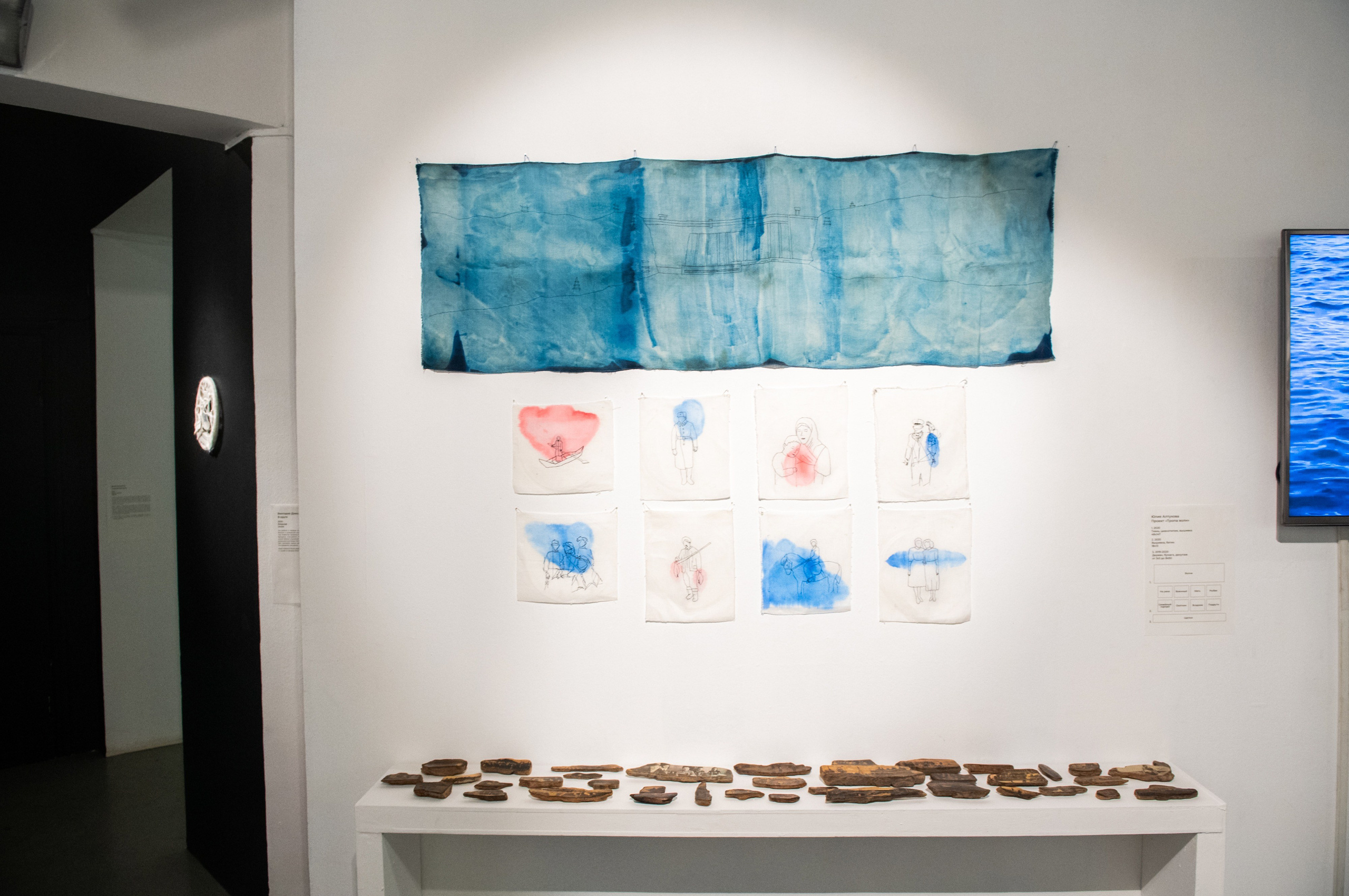
The gallery on Shabolovka focuses on promoting the heritage of the Russian avant-garde, so the exhibition “Nature of Nature” not only demonstrates contemporary artists' views on such a broad topic, but also draws on this heritage. The avant-garde artists were inspired by nature and dreamed of subjugating it. In this context, “The Path of Waves” reflects the idea of conquering nature and the ambivalence of the reception of this process.
The gallery exhibited the full version of the project, including wood chips, photographs, cyanotypes, embroidery, and video.

“Permanent and Temporary: In Search of a Place”
Group exhibition at the Arbuzz Gallery, supported by the Goethe-Institut in Moscow. Curated by Ekaterina Ermakova. October 8–30, 2025.
About the exhibition
This exhibition, which is dedicated to rethinking the legacy of Caspar David Friedrich in the context of contemporary culture, offers an insight into the concept of home during times of global instability. Fifteen artists will present works in various media, from painting and photography to generative video art, to create a space for reflection on the search for one’s place through the lens of Romanticism. The exhibition features wood chips.
Photo by Pavel Olearchik.

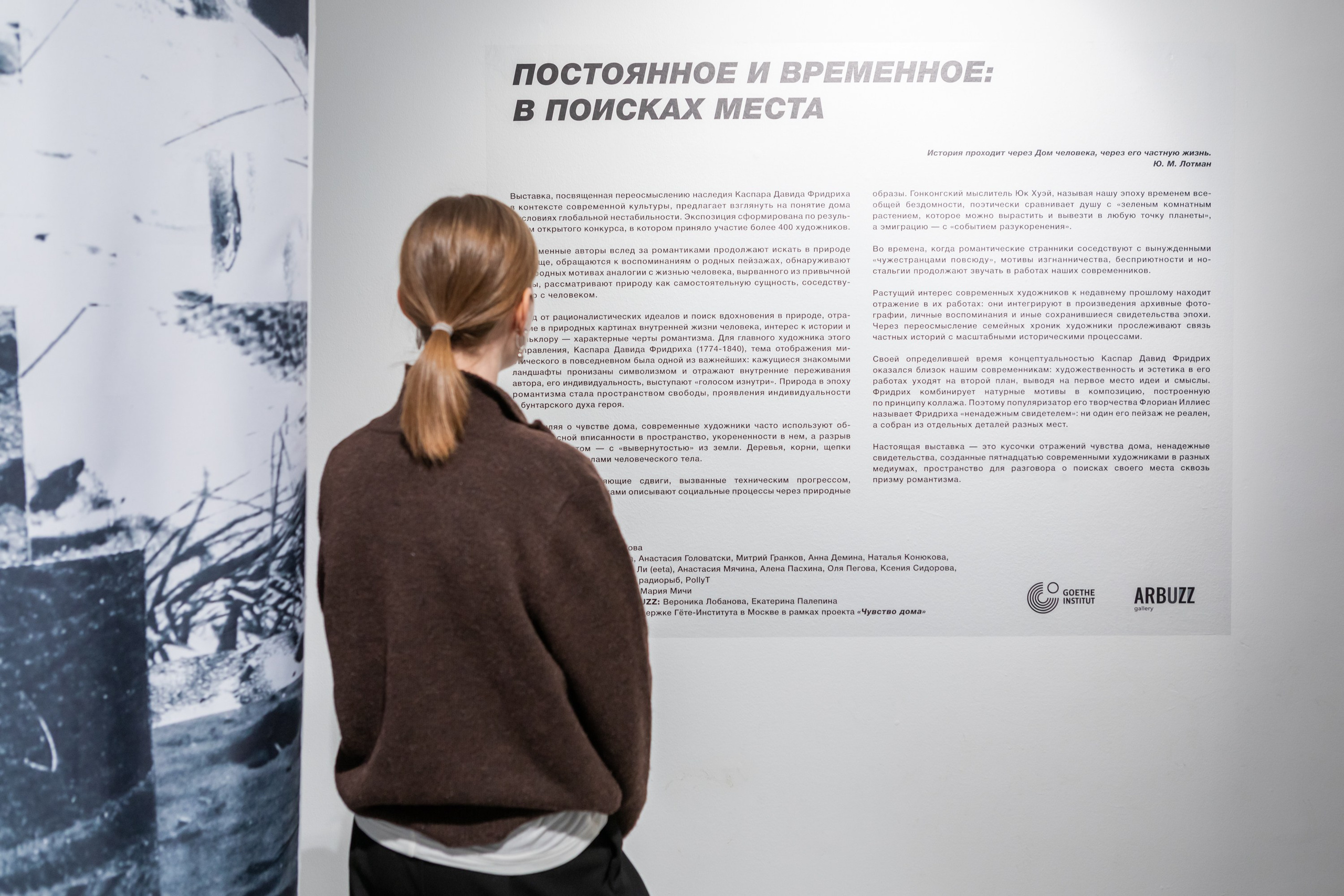
Photos by Natalia Melikova





